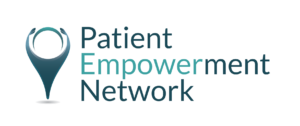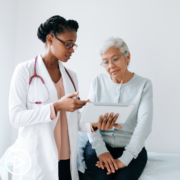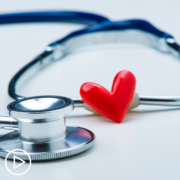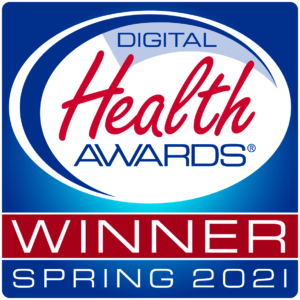Tag Archive for: myeloproliferative neoplasms
Nurse Natasha Johnson: Why Is It Important for You to Empower MPN Patients?
Nurse Natasha Johnson: Why Is It Important for You to Empower MPN Patients? from Patient Empowerment Network on Vimeo.
What are some ways that myeloproliferative neoplasm (MPN) oncology nurses and other MPN care team members can aid in empowering patients? Oncology nurse practitioner Natasha Johnson from Moffitt Cancer Center how she helps patients and their loved ones become more involved in care and treatment decisions.
See More from Empowering Providers to Empower Patients (EPEP)
Related Resources:
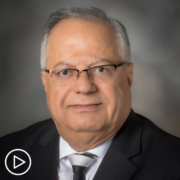
|
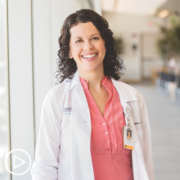
|
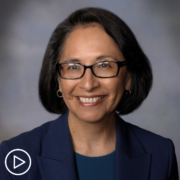
Dr. Ana Maria Lopez Why Is It Important for You to Empower Patients |
Transcript:
Natasha Johnson:
So I’m an encourager, so I will encourage patients to be involved, get their loved ones involved, educate themself on the disease on the common symptoms, on treatments, and then ways to alleviate those symptoms. So I would encourage them too, to keep on living. Let’s do what we can to improve the symptom burden so you can keep on living. And I think this is important, because I believe that empowered patients are very well-informed, and they are the top key player in their care. They’ll share their goals of care, which makes them better prepared to work with the healthcare team to create an individualized plan of treatment for them.
Dr. Gabriela Hobbs: Why Is It Important for You to Empower MPN Patients?
Dr. Gabriela Hobbs: Why Is It Important for You to Empower MPN Patients? from Patient Empowerment Network on Vimeo.
What are some ways that can myeloproliferative neoplasm (MPN) care providers can help empower their patients? MPN expert Dr. Gabriela Hobbs from Dana-Farber/Harvard Cancer Center shares her perspective of how she educates her patients. Dr. Hobbs explains her methods of empowering all her patients in their care – whether they’re newly diagnosed, needing long-term MPN care, or going on to seek care from other clinicians.
See More from Empowering Providers to Empower Patients (EPEP)
Related Resources:

|

|

Dr. Ana Maria Lopez Why Is It Important for You to Empower Patients |
Transcript:
Gabriela Hobbs, MD:
I think that empowering patients is really important in developing an excellent longitudinal relationship with an MPN patient. And the way that I like to empower my patients is through education. And that starts with the first meeting with the patient when they’re recently diagnosed, or maybe they’re seeking you out for another opinion because maybe something is going not well with their disease.
And so that first visit, I really like to spend a lot of time educating about what MPNs are, the different types, the things that we worry about, the possibility of disease progression, and then spending a lot of time talking about the different treatment options that exist. As well as spending a lot of time talking about how patients can maximize their quality of life with both pharmacologic interventions as well as lifestyle modification. And so education really is at the center of empowerment for patients.
And I think that that gives them a lot of control over their disease and prepares them for additional visits with me or with other clinicians if they’re seeking other care from other clinicians as well, especially those patients that maybe travel from far away. And so education during that visit is important, but also talking to patients about how to prepare for additional visits. So I talk to patients a lot about taking track of their symptoms, keeping track of how they’re feeling, how they feel with the medication, with perhaps a change in medication, how they feel like their symptoms are changing over time. Talking to them about the MPN symptom assessment form, and making sure that they can utilize that form to keep track of how they feel.
And then also asking questions…If they don’t ask questions during the encounter, make sure that they write down those questions in a notebook so that when they do go to see their clinician at the next appointment, they can make the most of that encounter by knowing that they’re going into that encounter, prepared with questions and able to summarize the way that they’ve been feeling over the last couple of weeks or months since their last appointment. So education is really always at the center of empowerment.
Becoming an Empowered and [ACT]IVATED MPN Patient
Patient Empowerment Network (PEN) is committed to efforts to educate and empower patients and care partners in the myeloproliferative neoplasm (MPN) community. MPN treatment options are ever-increasing with research advancements in treatments and testing, and it’s essential for patients and families to educate themselves with health literacy tools and resources on the latest information in MPN care. With this goal in mind, PEN kicked off the [ACT]IVATED MPN program, which aims to inform, empower, and engage patients to stay abreast of up-to-date information in myeloproliferative neoplasm care.
The [ACT]IVATED MPN program is aimed at newly diagnosed MPN patients, yet it can help patients at any stage of disease. [ACT]IVATED MPN helps patients and care partners stay updated on the latest options for their MPN, provides patient activation tools to help overcome care disparities and barriers to accessing care, and powerful tips for self-advocacy, coping, and living well with a blood cancer.
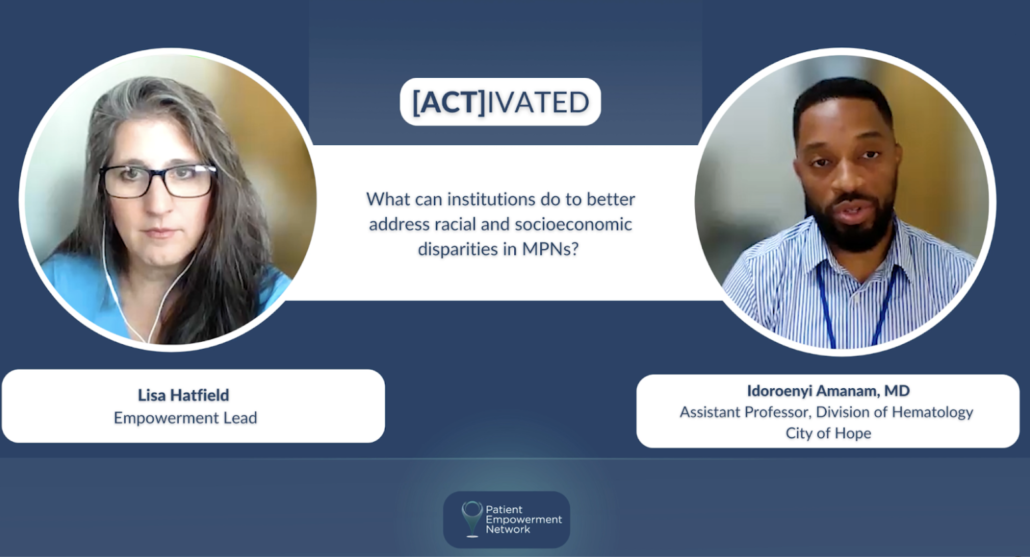
Myeloproliferative Neoplasm Disparities
Race or ethnicity may have an impact on some health conditions, including MPNs. Cancer patient Lisa Hatfield interviewed Dr. Idoroenyi Amanam, Assistant Professor in the Division of Hematology at City of Hope. He explained about MPN risks and outcomes that may be impacted by patient race or ethnicity. “…we know that if you have high blood pressure, you have a higher risk for these complications-associated MPNs. And we know that African American males have a higher risk for that, so I think those things are…that example is a clear indicator that really identifying these basic risk factors that are related to diet, exercise, your weight, and other behavioral, possibly behavior-related factors may put you at higher risk to have complications from MPNs.”
Dr. Amanam further shared research findings and what needs further study to draw conclusions. “We have looked at incidences of thrombotic events in patients who have MPNs, and we tried to see if there was a difference between racial groups, and we didn’t. We did see that if you’re younger, you do have a higher risk of thrombosis over time, but there was no difference for if you were white, Hispanic, or African American. What we did find though, in a small single center study is that if you are non-white, there’s a higher risk of death over time. And I think we still need a lot of work to get a better understanding as to why that’s the case.”
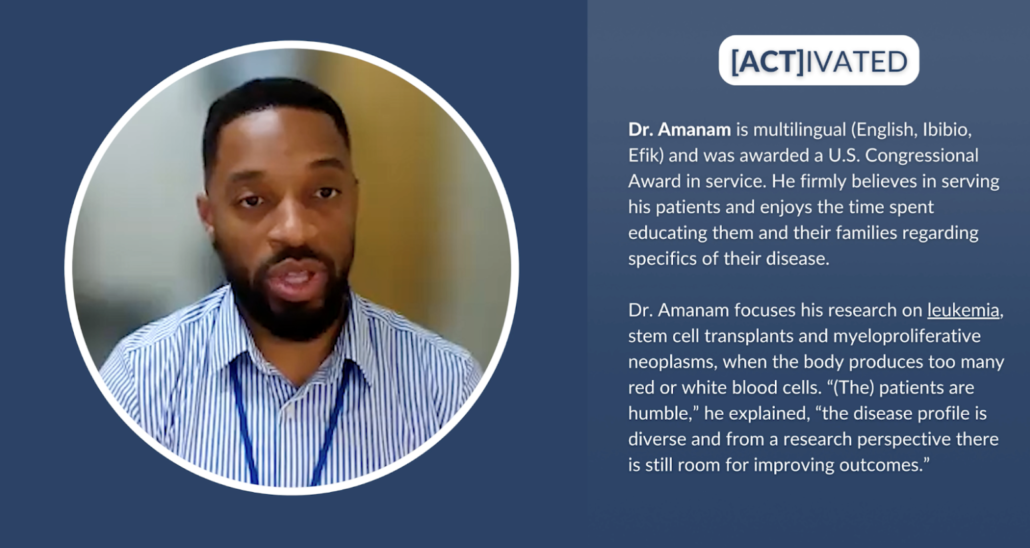
Solutions for Improved Myeloproliferative Neoplasm Care
Clinical trials are key in moving MPN research forward to improved treatments and care. Dr. Amanam shared his perspective about other players besides patients who can help move the needle forward. “I think that going back to the idea that we want to practice the best science, we want to be able to publish the best data. The responsibility is on the clinicians, the scientists, the clinical trialists, the drug companies, the institutions to really be able to structure clinical trials that are relevant to our real world experience. And so how can we better encourage that? I think from a government perspective, potentially incentivizing drug companies and institutions and the other major players that really are involved in pushing this field forward to practice better science.”
Dr. Amanam expanded on how clinical trials can be diversified. “And once we’re clear that being able to have a diverse participant pool will give us the best results and therefore will lead to your drug being approved. I think we will have more participants from all groups.”
Some underrepresented patient communities may experience obstacles to MPN care. MPN Nurse Practitioner Natasha Johnson from Moffitt Cancer Center provided advice to help patients. “Patients themselves can research clinical trials by looking at clinicaltrials.gov and see what’s out there and contact the academic center that’s performing those trials. There’s free information online that provides recorded sessions from conferences or speakers or speaking done by the MPN experts that you can just look to and get to easily to help understand the disease, knowing the symptoms, and then guiding treatment.” Natasha Johnson continued with additional advice for optimal care. “.…to try to get into a large cancer center or academic center and see an MPN expert. Many times, this is just by self-referral. Charity is sometimes provided through these. Zoom visits can be done as consults or follow-up visits. So my encouragement would be search these out, find out who the experts are, and contact them directly and see if there is any possibility or a way that you can get in to see an MPN expert for a consult so you can get the best care possible.”
Signs of MPN disease progression is something that patients and providers must be on the lookout for. Natasha Johnson shared her advice for patients to empower themselves against disease progression. “…monitor your blood cell counts, be your own advocate. Think about if they’re changing, could it be medication, or is it disease progression? Monitor your symptoms. Look at the total symptoms score or write down your symptoms and try to record where you’re at in intervals. Are things getting worse? If they are, don’t wait three months for your next appointment. Contact your healthcare provider and ask to be seen. Ask about getting a repeat bone marrow biopsy to establish where the current disease status is because that can open up doors possibly to more treatments.”
The future of MPN care has an additional approach to address. Dr. Amanam shared his perspective and how patients can help advocate for improved treatments. “I think in the next three to five years, we’re going to have drugs that are going to actually be able to treat the underlying disease before it gets to a point where you may need more aggressive therapy…And so it’s exciting where we’re going, and I think the questions that as a patient that I would ask are, because of the fact that we only have few FDA-approved therapies, are there any clinical trials that are able to target the underlying disease as opposed to just treating the symptoms? I think that’s very important for the patients to ask, especially in this space now.”
Rates for stem cell transplant approvals must improve for lower income groups and for African American and Hispanic groups to provide better health outcomes for blood cancers like MPNs. Dr. Amanam explained what’s involved with transplants and how others can help as donors. “You can donate your bone marrow, or you can donate your stem cells that are not inside of your bone marrow. And typically as a donor, your experience of actually donating is about a day. And the recovery time after you donate your bone marrow or stem cells, it’s typically within about one to three days. So the benefit of donating your stem cells or bone marrow outweighs the inconvenience of a day or a couple of days of your schedule being altered. So I think that’s really important to understand. And I think if we can get more people to be aware of this, I think we can definitely get more donors.”
![[ACT]IVATED Program Logo](https://powerfulpatients.org/wp-content/uploads/Screenshot-2023-08-24-at-3.03.57-PM-1030x586.png)
[ACT]IVATED MPN Program Resources
The [ACT]IVATED MPN program series takes a three-part approach to inform, empower, and engage both the overall MPN community and patient groups who experience health disparities. The series includes the following resources:
- Myeloproliferative Neoplasm Basics for Newly Diagnosed Patients
- Are MPN Risks and Outcomes Impacted by Race or Ethnicity?
- What Does the Future of Myeloproliferative Neoplasm Care Look Like?
- Are There Any MPN Disparities in Subtypes and Genetics?
- Have MPN Disparities Been Addressed by Institutions?
- MPN-Related Complications | Are BIPOC Patients at Higher Risk?
- How Can MPN Clinical Trials Be Diversified?
- Understanding MPN Treatment Goals and Shared Decision-Making
- Are There Disparities in Stem Cell Transplant Outcomes?
- Bone Marrow Registries | What Myeloproliferative Neoplasm Patients Should Know
- Graft-Versus-Host Disease Risk for BIPOC Patients
- Emerging MPN Therapies in the Research Pipeline
- How Can Myeloproliferative Neoplasm Care Barriers Be Overcome?
- Myeloproliferative Neoplasm Financial and Care Resources
- How Can Underrepresented MPN Communities Access Support?
- [ACT]IVATED MPN Resource Guide
- [ACT]IVATED MPN Resource Guide en español
- [ACT]IVATED MPN Patient Vignettes
- [ACT]IVATED MPN Activity Guides
Though there are myeloproliferative neoplasm disparities, patients and care partners can take action to empower themselves to help ensure optimal care. We hope you can take advantage of these valuable resources to aid in your MPN care for yourself or for your loved one.
Yolanda’s Story: My Path to a Myeloproliferative Neoplasm Diagnosis
Yolanda’s Story: My Path to a Myeloproliferative Neoplasm Diagnosis from Patient Empowerment Network on Vimeo.
Latina essential thrombocythemia (ET) patient Yolanda had many symptoms before receiving her ultimate diagnosis. Watch as she shares the symptoms she experienced, her long path to diagnosis, and her lessons learned about patient empowerment.
Related Resources:

|

La historia de Yolanda: mi camino hacia un diagnóstico de neoplasia mieloproliferativa |

|
Transcript:
My name is Yolanda, and I was diagnosed in my mid-40s with essential thrombocythemia (ET), a myeloproliferative neoplasm. I’m a Latina woman, and my path to diagnosis took an extended time.
Thinking back on my journey, my symptoms began with severe headaches and dizziness that made it too difficult to finish my work. I also experienced debilitating fatigue that would either keep me in bed for a day, or I’d feel like my vision and thinking were in a fog. It all felt very strange, and I saw my doctor about the symptoms, but he prescribed antibiotics for an infection. Then later I felt numbness and tingling in my hands and feet and then pain in my abdomen. Finally, my doctor decided to run full blood work to see which levels might be abnormal, and that was followed with a bone marrow biopsy to further investigate.
When I finally received my diagnosis with essential thrombocythemia, I felt some relief but also a sinking feeling and dread of what might be ahead for me. I feel like one issue with getting diagnosed may have been that I looked healthy. Maybe my doctor would have ordered the blood work sooner if I didn’t look well. But I try to look forward rather than back. An MPN specialist was recommended to me, and he initially put me on low-dose aspirin.
Then I was prescribed hydroxyurea (Hydrea). I’ve been doing well and feel grateful to have treatment options. But if my disease progresses to a point where I need other options, I’ve already decided that I’ll consider participating in a clinical trial. I feel like I’ve been relatively lucky and want to share my cancer story to help others.
Some of the things I’ve learned on my MPN journey include:
- Empower yourself by asking your doctors questions about your MPN and what to expect before, during, and after treatment.
- Learn about clinical trial options. There may be programs that will help you with travel, lodging, and other uncovered expenses. And clinical trials may provide an option for your MPN if you’ve already used all other options.
- You are the person in charge of your health. If you feel like something is wrong in your body, advocate for yourself. Ask for more testing to find out what is wrong.
- Be careful about where you look for cancer information. Use credible sources like MPN Research Foundation, The Leukemia & Lymphoma Society, and Patient Empowerment Network.
These actions were key for staying on my path to empowerment.
Share Your Feedback
Create your own user feedback survey
Empowering MPN Providers to Empower Their Patients
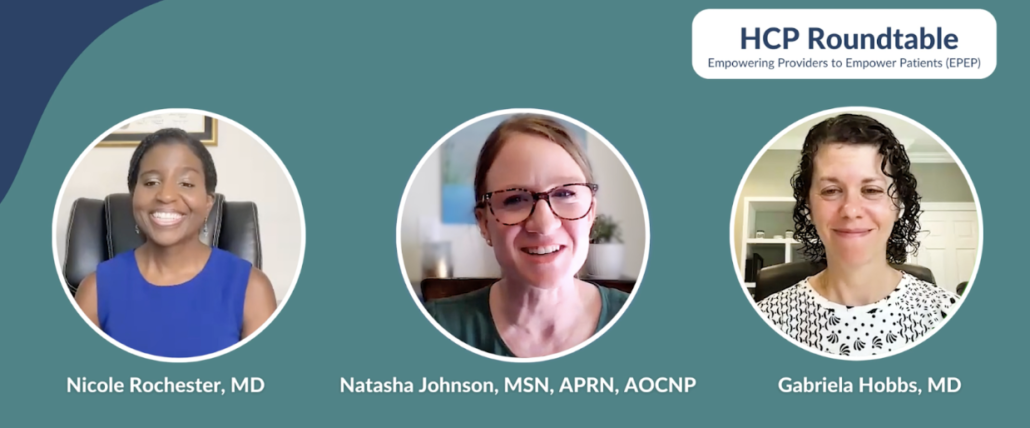
Empowering patients is at the heart of efforts at Patient Empowerment Network (PEN), and work toward reducing health disparities is part of conversations among healthcare professionals. With this in mind, PEN has taken on a new initiative for myeloproliferative neoplasms (MPNs), the MPN Empowering Providers to Empower Patients (EPEP) initiative. The program expands PEN’s reach to healthcare professionals with the goal to improve physician-patient communication; shared decision-making; and the role that MPN patients, survivors, care partners, and healthcare professionals each play in the shared decision-making process.
The EPEP initiative includes the following resources:
- Needs Assessment outlines key factors that enable patient empowerment, attributes of an empowered patient, and advice for healthcare professionals to perform a needs assessment for each patient.
- EPEP Roundtables with Dr. Nicole Rochester and MPN experts Dr. Gabriela Hobbs and Natasha Johnson as they discuss a range of topics including how to help your MPN patients play an active role in managing their care, healthcare provider recommended strategies for managing disease burden, the importance of advanced practice clinicians on the MPN health care team, clinical trials and why it’s vital for nurses to address this topic with patients and families, and cultural humility in action.
- EPEP Resources provides the resource guide, infographics, blog, and other resources to improve patient care
- EPEP Portal utilizes PEN’s robust resource library and that of numerous trusted advocacy partners to create a vetted list of patient education resources. PEN delivers a curated PDF according to your interests efficiently to your inbox.
Key Takeaways to Help Empower MPN Patients
PEN had the opportunity to interview experts Dr. Gabriela Hobbs and Natasha Johnson to learn about some of their expertise. They shared their perspectives about vital ways that they work with patients to help empower them and to work toward the best personalized care for each patient.
The art of listening to patients is an essential part of empowering patients in their care journeys. Expert Dr. Gabriela Hobbs from Massachusetts General Hospital shared her perspective about listening. “…I think knowing where your patient is emotionally, what’s important to them, what are their worries, is really important, so you can have a conversation where you’re not just speaking about the things that you as a provider think is important, but really also listening to where the patient is coming from, and so that you can make sure that you’re appeasing their anxieties and whatever decision you make is consistent with both what you think is medically important, but also with what’s really important for the patients. I think listening is really at the core there.”
Of course, nurse practitioners often serve as valuable members of the MPN care team. As a nurse practitioner, Natasha Johnson shared her perspective in empowering MPN patients. “…I think that we spend a ton of time educating them to make sure that they really understand this disease, the symptoms that go along with it, the treatments that go along with that, and once we have a good confidence that they understand everything, lead them into discussing what their goals of care are, and then we take all that information together, and we create a treatment plan specific to that patient, really aiming to improve their quality of life and overall survival.”
Johnson also shared about the benefits of seeing an MPN specialist. “…I really think there’s a benefit to seeing an MPN expert that is at a national cancer center, academic center. I do think there is some more time allotted to those visits, especially the consults and first appointments for the patient, and we kind of start this with my doctor and other providers of assessing how much does the patient even know to begin with? So that can direct us where to start. And then how deep do they want to go.”
Helping to educate MPN patients, of course, can take a variety of different forms. Johnson explained some of the actions that she takes to help her patients. “…I write a lot of things down for my patients when I see them, I think visuals are really helpful, provide literature, I tell them what websites to visit. A lot of times, they just Google their doctor, which is great because they can find them and listen to their own lectures, and they really learn a lot. So just guiding them to those resources. I do think it’s important, too, to give them something like the total symptom score form. Just having that visual of, these are what is common, and then they can think about that between visits, but I think all of those things really help to educate them and get them involved.”
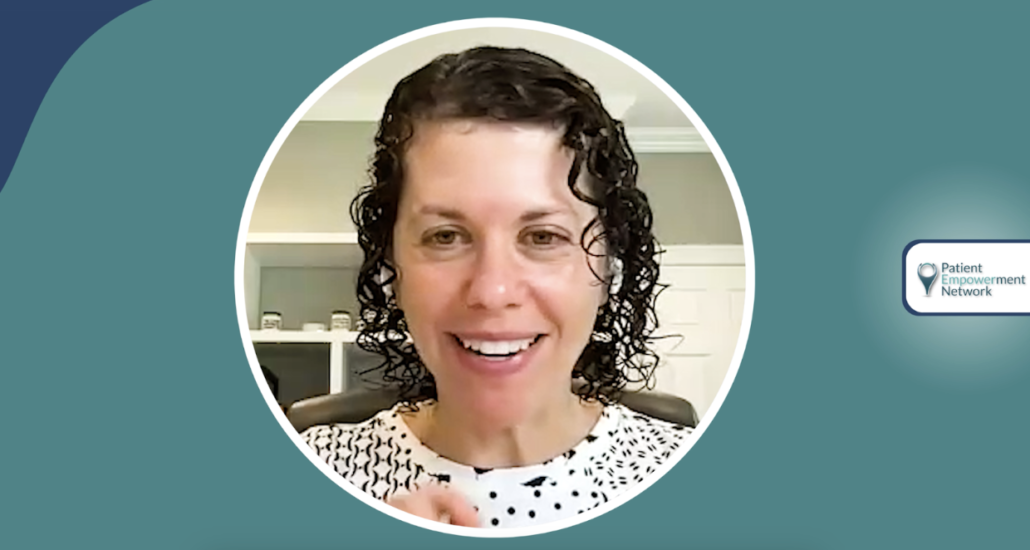
MPN Care Team Best Practices for Patients
Tracking symptoms and preparing for office visits are key tasks for MPN patients. Dr. Hobbs explained how essential these tasks are for patient empowerment. “…for those patients that are very symptomatic, for example, keeping track of their symptoms over time, writing down notes about how they felt, what they think made something better, made something worse, how they’re responding to these medications, questions that they may have, and writing all of that down helps them be more empowered patients. They can advocate for themselves in a more organized way when they do go see either me or another clinician. So they come in fully prepared with the information and the questions that they want to get out of that visit.”
Dr. Hobbs has experienced the value of the symptom assessment form. “I think clinicians are busy and sometimes feel like having a tool to ask those questions is maybe too burdensome. I personally find that the MPN symptom assessment form is a quick form, it’s easy to complete, it can be given to a patient, there’s a piece of paper while they’re waiting for you.”
And Dr. Hobbs shared the benefits she’s experienced with the use of the form. “And that also directs the conversation because it really just gives numbers, makes it objective, and then can really start that conversation. And so remembering that we do have this tool, it actually can help cut down time to the visit and make it more focused, and it’s helpful to…empowers the patient and make sure that you really are asking about all of those symptoms, and just making sure that you don’t just assume that a patient has or doesn’t have a symptom, but really saying, ‘Are there any other symptoms that you’ve noticed?’”
Dr. Hobbs has also witnessed the value of care partners being involved in MPN care conversations about symptoms. “…the spouse is like, ‘But remember, you really haven’t been having your dinner, and remember how you were complaining about how your stomach was hurting every time you ate. And you say you’re not itchy, but every night when we’re watching TV, I turn around and I see that you’re scratching.’ And so I think that’s also a really important tool to make sure that you make use of the family members, because they really know what’s going on if the patient is not willing to share as much or doesn’t like to complain.”
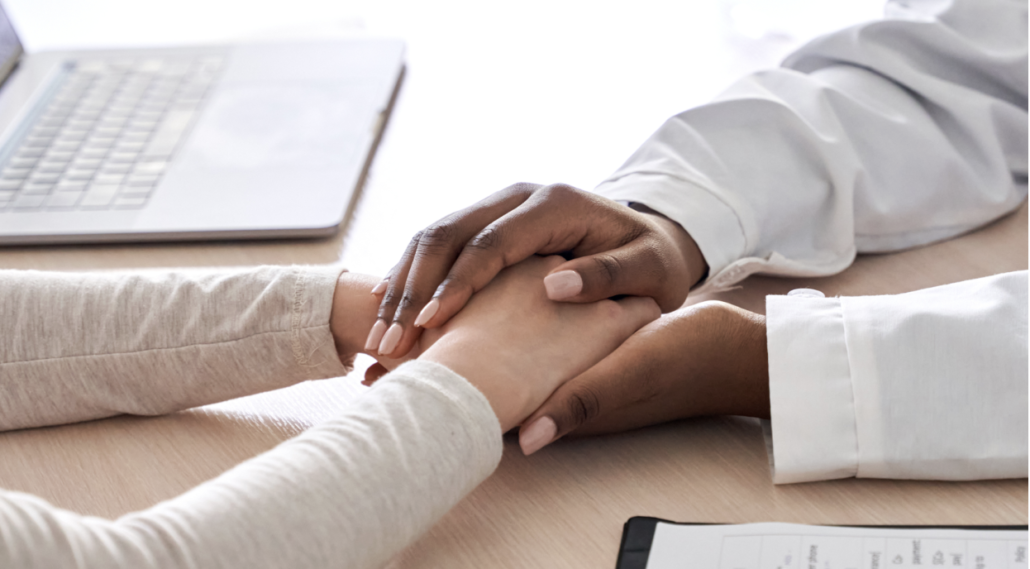
Advocacy for Cultural Humility
Cultural humility is a process of listening and learning about patients. Dr. Hobbs shared her perspective. “…there’s all sorts of history in this country, especially about clinical trials. And I think coming into those encounters, like I said at the beginning of our conversation, taking into account that you really do know your patient. But sometimes, you don’t know the patient as well. You’re getting to know them, and you need to make a decision. Just listening, being humble, being aware, trying to understand where the patient is coming from.”
Dr. Hobbs continued to share about taking this vital time to learn about your patients’ ways of thinking. “I think sometimes, especially when you’re trying to make a decision quickly and you find that there’s some friction, I think taking some time to say, ‘Alright, where is that coming from?’ And perhaps I’m coming across too strong with this recommendation to do this clinical trial and there’s maybe something that I need to explore, and so just keeping an open mind and trying to just ask questions, ‘Where are you coming from? What’s important to you? Why are you hesitating? Or is there something that I can explain in a different way?’”
Even though MPN treatments have experienced increases in quantity and efficacy of treatments, vital HCP best practices can go a long way in empowering MPN patients.How can you help your MPN patients play an active role in managing their care? How do we improve clinician-patient communication about symptoms? How should fellow MPN specialists explain disease progression to patients and care partners? We hope healthcare providers can take advantage of these timely resources of the EPEP initiative to work toward equitable and culturally sensitive care for all MPN patients.
See More from MPN | Empowering Providers to Empower Patients (EPEP)
Tracking MPN Symptoms: Strategies for Managing Disease Burden
Tracking MPN Symptoms: Strategies for Managing Disease Burden from Patient Empowerment Network on Vimeo.
How can MPN providers best have conversations with their patients about symptoms? Dr. Gabriela Hobbs and expert Natasha Johnson share tactics and advice for assessing MPN patient symptoms.
Dr. Gabriela Hobbs is a hematology-oncology physician specializing in the care of patients with myeloproliferative neoplasms (MPN), chronic myeloid leukemia, and leukemia. Dr. Hobbs serves as clinical director of the adult leukemia service at Massachusetts General Hospital and is an assistant professor at Harvard Medical School.
Natasha Johnson, is an Advanced Oncology Nurse Practitioner at Moffitt Cancer Center, where she cares for people living with MPNs with kindness, patience, and humanity. Natasha also speaks at conferences to educate other healthcare professionals about MPN care, research, and treatment.
See More from Empowering MPN Providers to Empower Patients (EPEP)
Related Resources
Transcript:
Nicole Rochester, MD:
Both of you have mentioned the importance of tracking symptoms, and so we want to shift and talk about strategies for managing disease burden, and I’d love to hear from each of you about what are your recommendations as you speak to MPN patients and their care partners about symptoms? How should other providers bring up those conversations and what are the best ways to really elucidate the symptoms that patients with MPN are having? So I’ll start with you, Dr. Hobbs.
Gabriela Hobbs, MD:
So this may sound obvious, but the first way of figuring out what symptoms a patient has is by asking, and it’s so interesting, right? There’s been studies comparing what symptoms are most important to patients and what symptoms clinicians think the patient have. And guess what, the clinicians don’t actually know which symptoms the patient has, or which symptoms are most important to the patient, and…so anyway, it sounds obvious, but it sometimes isn’t, and I think clinicians are busy and sometimes feel like having a tool to ask those questions is maybe too burdensome. I personally find that the MPN symptom assessment form is a quick form, it’s easy to complete, it can be given to a patient, there’s a piece of paper while they’re waiting for you.
And that also directs the conversation because it really just gives numbers, makes it objective, and then can really start that conversation. And so remembering that we do have this tool, it actually can help cut down time to the visit and make it more focused, and it’s helpful to…empowers the patient and make sure that you really are asking about all of those symptoms, and just making sure that you don’t just assume that a patient has or doesn’t have a symptom, but really saying, “Are there any other symptoms that you’ve noticed?” I’m trying to be really thorough because, honestly, MPN symptoms can manifest in so many different ways for our patients in addition to those 10 symptoms that are asked in the MPN symptom assessment form, and so trying to be thorough about those symptoms, I think, really important.
Nicole Rochester, MD:
And thank you for that and for highlighting sometimes this disconnect between the patients and the clinicians, and also the fact that what’s important to us may not be as important to the patient, and what’s important to the patient may get overlooked by us, and so again, it’s always going back to centering the patient and their experiences. Do you have anything to add, Ms. Johnson, with regard to talking to patients about their symptoms?
Natasha Johnson:
Yes, I had to just laugh in on my head with what Dr. Hobbs said, ’cause it’s so true. With MPNs, numbers are a big deal in this world, and we can see a patient and just look at their numbers and think, “They look good,” and then you see them and they’re like, “I feel horrible.” And it just doesn’t relate. And so I agree with what she said, really going over what are the common symptoms and then thinking about, if they’re on treatment, is this like a medication side effect or is this a disease-related symptom, and then thinking just about comorbidity. So often our patients can have CHF or pulmonary hypertension that’s contributing to their symptoms, and so discussing that and trying to get those things managed.
Share Your Feedback:
Create your own user feedback survey
PODCAST: MPN Specialized Care and Technology: Digital Health and Symptom Management
Nearly 80% of patients living with a myeloproliferative neoplasm (MPN) are affected by fatigue. Can digital health alleviate symptom burden in MPN care? What exactly is mobile app intervention, and how can it help me? Dr. Krisstina Gowin and Dr. AnaMaria Lopez discuss technological interventions in MPN symptom management, telemedicine limitations and the importance of connecting with an MPN specialist.
See More from MPN TelemEDucation
Transcript:
Lisa Hatfield:
Welcome to this Patient Empowerment Network Program, I’m your host Lisa Hatfield. In this unique program, we explore cancer care and technology, specifically the importance of specialized care in myeloproliferative neoplasms, MPNs for short, and the role of digital health in symptom management. Today, I’m joined by two incredible experts, Dr. Krisstina Gowin is a hematologist, oncologist treating MPNs. I’m gonna shorten that, simplify it, treating MPNs. Dr. Gowin is Assistant Professor of Medicine at the University of Arizona. And Dr. Gowin it’s such a pleasure to connect with you.
Dr. Krisstina Gowin:
Oh, it’s such an honor to be on today and connect with you all. Thank you so much for having me.
Lisa Hatfield:
Also joining us is respected oncologist, Dr AnaMaria Lopez, Professor of Medical Oncology at Sidney Kimmel Cancer Centre, Thomas Jefferson University. Dr Lopez is a telemedicine pioneer as the founding medical director of the Arizona Telemedicine Program. Welcome, Dr Lopez, thank you for being here.
Dr. AnaMaria Lopez:
Thank you so much. So looking forward to the discussion.
Lisa Hatfield: Thank you. So, Dr Lopez, I’d like to start with you to talk about cancer care and technology and how far we’ve come with technology and cancer care. We’ve made a fair number of strides in cancer care as they relate to digital health. Can you speak to that a bit?
Dr. AnaMaria Lopez:
Sure. I always say that the COVID pandemic allowed us to advance telehealth in a couple of months what probably would have taken 70 years. So we went from maybe 10% of the visits being done through tele to 90% plus. So a huge, huge change, and a lot of lessons learned, both in the, how do we do it clinically as well as how do we integrate this? How do we integrate this into clinical trials and to move beyond? We really thought telemedicine and really thinking telehealth because there are so many technologies, so there could be monitors, there could be… A lot of us were doing work in patient-recorded outcomes, how do you integrate that? How do you make it easy for patients to use this? And maybe it’s not simply the patient, but it’s also the patient and the caregiver who can help with this reporting. What are really the implementation efforts that need to be done? I could go on and on because there are so many lessons learned and it really shook things up. So people are thinking of this as a new technological revolution. So technology plays a big role in care and certainly a very big role in cancer care.
Lisa Hatfield:
And just out of curiosity, Dr Lopez, do you have a lot of your patients who still continue to see you via digital health or telehealth, who prefer that?
Dr. Krisstina Gowin:
Yes. Yeah. For example, in some of the psychiatry literature, which I think is a little bit unexpected ’cause you think psychiatry is such an intimate interaction. Well a lot of patients actually feel safer when it’s digital, when it’s through tele. So yeah, I do. And we were talking earlier about doing integrative medicine, and almost all of my integrative medicine patients, we do at a distance. I really think of it as it’s a way to bring back the house call.
Lisa Hatfield:
Yes. Well, thank you for that overview, Dr Lopez. So the pandemic has resulted in significant changes to many aspects of daily living for many of us, but for patients living with cancer like myself, there are different realities that we’ve had to deal with. Do we go in for our monthly blood draws, or do we wait a couple of months? So question for Dr Gowin, can you give us an overview of the impact that Covid-19 has had on MPNs or MPN care?
Dr. Krisstina Gowin:
Absolutely. Well, there was a really wonderful study that was done, really led out of Mayo, by Jeanne Palmer and Ruben Mesa, and it was an international study, and it looked at 1500 MPN patients. And they asked questions like, how many of you are actually having telemedicine? And this was in 2020, kind of at the beginning. And over half of them had already been engaging in telemedicine. And about a quarter of them felt that their care actually was delayed a little bit and that there were actually consequences to that delay, so that really speaks to an international kind of change in the paradigm of how we’re delivering care for MPN patients. The other thing is the lockdowns, the lockdowns that were occurring for us here in the US and really internationally. And what they did is, they asked patients their MPN symptom burden, and those that were on lockdown, not surprisingly I think to all of us, had a significantly higher symptom burden.
So I think that really speaks to that A, yes, there was a very large impact of COVID on the development of telemedicine and the need for telemedicine. But it also underscores the need for symptom management that we now have a group of patients that are having a higher symptom burden, probably likely secondary to more sedentary behavior, more anxiety, more depression, but a higher symptom burden because of COVID. And so we really need not only more therapeutics and perhaps non-pharmacologic interventions to support their symptom burden, but it needs to be delivered on a digital platform.
Lisa Hatfield:
Thank you for that, Dr. Gowin. So you brought up a really good point, and this is a great segue to talk about integrative health. So I have multiple myeloma, and of course that comes with side effects from the different therapies and symptoms of their own. We have a great integrative health center at our cancer center here locally where I live, and I’ve used it for acupuncture for some of my symptom management. I’ve also watched you on different platforms, through webinars and patient support groups where you describe different integrative health techniques and that type of thing. So I’m wondering… Two questions. The first part is, what symptoms do MPN patients face the most? And then how can they use integrative health to do that, particularly as it relates to telemedicine? Are there telemedicine options for integrative health? I suppose things like acupuncture, maybe not, but other types of integrative health, and can they get a consult for integrative health? Can they even go as far as getting a consult? So if you can answer those questions, the symptoms they face, how to use integrative health, and if they can get a consult for integrative health, that would be great. We’d appreciate that.
Dr. Krisstina Gowin:
Yeah. Well, Lisa, I wanna take a moment just to validate your journey that you’re going through and to congratulate you for your self-advocacy to go look for those integrative therapies to support yourself. And for MPN patients, I will say that it’s a really unique group, and so all cancer patients experience symptoms, but in myeloproliferative neoplasms, it’s really kind of this heterogeneous what we call a symptom burden. And so most patients will experience fatigue about 80% of MPN patients. But then beyond that, there’s really a whole slew of different sequelae that can be associated with the disease, which you may or may not think about when you’re thinking about MPNs, such as psychosocial issues, sleep issues, sexual issues.
And then we have kind of the classical issues that happen with MPNs, such as dizziness, but we talked about the fatigue, bone pain, itching, abdominal discomfort from an enlarged spleen and early satiety, or feeling full quickly. It’s really a huge symptom complex, if you will. And we now have validated measurement tools to better understand those. It’s the MPN symptom assessment form, which has really, I think, revolutionized how we look at MPN. It’s no longer just treating the blood counts. We’re treating the patient as a whole, and even within our NCCN guidelines, kind of how we as oncologists go through the algorithms of how to change therapy and how we look at patients. We now have symptoms in there. So even if blood counts are controlled, we may change therapies or even do a bone marrow based on symptoms alone. So symptoms are a huge thing in MPN. So getting to your second question for integrative health.
So I think that MPN… The patients in the community are really early adopters for digital engagement, which is fantastic. Everyone’s very engaged and I’ve had the opportunity to work on meditation apps, yoga apps, a wellness based app here from the University of Arizona, and patients just really accrue fast. Everyone’s so excited. And most of these, though, were very small kind of pilot trials, looking at feasibility, can’t we really do these things? But most of them as well are showing some impacts on depression, anxiety, sleep, and total symptom burden. So I do think that these modalities through digital platforms certainly can make a difference on the symptoms. And we’ve seen that with meditation. We’ve seen it with yoga and we’ve seen it with a seven domain wellness app. And is it the digital engagement? I don’t think so.
I think it’s likely the integrative therapies that they’re receiving through that platform, right? We know meditation works, we know yoga works, perhaps not so well in MPNs. We need to build that evidence base, but other solid cancers, we know those interventions really work. But it’s wonderful to get that kind of early data, say it not only works, but it also works when you’re doing it at home, when you’re doing it on a digital platform. And so I would encourage all patients listening to this to, yes, look at what’s around you, what are the resources, what are the clinical trials? Looking at these different digital modalities for integrative medicine, but also to go get an integrative consultation.
And as Dr. Lopez already had mentioned, she does all of her integrative medicine via telemedicine now, which is fantastic. And so you, it’s really, it’s that you know, your fingertips. You now have access to wonderful oncologists like Dr. Lopez to guide you in this journey. And the journey is not only allopathic western medicine, but it’s treating you as a person, you as a whole symptom complex. And that’s really what integrative medicine aims to support you through.
Lisa Hatfield:
Thank you for that. Dr. Gowin. So you talked about an app that patients can use. Is this app accessible to any patient or is it just within a trial or a study that you’ve done?
Dr. Krisstina Gowin:
No, it is widely accessible. It is free, even better. [laughter], it’s called my Wellness Coach. And that’s…
Lisa Hatfield:
I’m writing that down. Okay. [laughter]
Dr. Krisstina Gowin:
Yeah. Yeah. It’s really wonderful. Many domains of wellness. It’s based on motivational interviewing and smart goals. It gives you little reminders of, hey, and you set your own goals, which is wonderful.
Lisa Hatfield:
And what types of interventions then does that contain? Does it have things like you said, meditation and does it have a yoga program for patients? Or what types of interventions?
Dr. Krisstina Gowin:
Not quite yet. I think that that’s what we aspire to is really this multidimensional intervention. It’s not really an intervention. It’s looking at your life. It’s saying, “what are you eating? What are your nutrition goals? How are you moving? What are your exercise goals?”
How is your resiliency? How is your spiritual health? How are your relationships? And so it’s asking all of these domains of what our wellness is and helps to identify where perhaps you would like to devote more time and energy to, and also gives some resources and education around each of those domains and why they’re so important. But you set your own goals and then…
Lisa Hatfield:
That’s great.
Dr. Krisstina Gowin:
You’re accountable for your goals.
Lisa Hatfield:
Great. Well, thank you so much for that information. And you mentioned that Dr. Lopez also does her integrative health via telemedicine. So I’m gonna ask Dr. Lopez, can you speak to that a little bit more? How do you do that with patients? Do they just contact you and set up an appointment for an integrative health consult or appointment? And do you conduct some of that yourself or do you send them to particular resources in the community?
Dr. AnaMaria Lopez:
Sure. So, yes, patients can make an integrative oncology appointment directly. I really like to do the consults through tele simply because I can… As I was mentioning, it’s like a virtual house call to really get a sense of the patient. Often a partner, significant other, caregiver might be present as well and as we know there’s the survivor and there’s the co-survivor. So including both can be very helpful to some people and I think the initial intake… Again as Dr. Gowin was saying it depends so much on what the person wants to do. So the first opportunity for coming together is simply, where are you? What are your goals? What’s important to you? And of the panoply of options, which might be the easiest or the one that you are most interested in.
And so depending on what it is we might work together, we might also bring in others if the person is really interested in making lifestyle changes, let’s say related to nutrition. The person might work closely with a nutritionist for some period of time and then come back and we’d come together and reassess. You mentioned the acupuncture and you can’t do acupuncture at a distance, but you can certainly teach people about the points and consider acupressure for certain points. So there’s so many ways to engage and interact, but yes, I think like a lot of medicine, it’s a team-based approach.
Lisa Hatfield:
Great, thank you. Dr. Lopez. I do have to say with acupuncture, one of the side effects of a lot of the cancer medications is neuropathy. And a lot of patients like myself try every option, every pharmacological option, whether it’s gabapentin or something else, and they don’t work an acupuncture for me anyway, personally. I had a significant reduction in the painful neuropathy… Not so much in the tingling, but a significant reduction that, so I am very strong advocate for integrative health. So thank you for explaining that a bit more and as long as we have you on Dr. Lopez, can you also speak more broadly to innovative telehealth tools that are making an impact on symptom management and overall cancer care?
Dr. AnaMaria Lopez:
Sure. So one of the things that we know, is that for example, people have appointments every three weeks, or they have appointments once a month with the oncologist, and a lot can happen in that time. So setting up systems that are assisted by technology, so that patients can report their symptoms in real time can be very helpful. And some of this may require… It may not be a common way where the person may be familiar going to a computer or going to their phone to kind of say, “This is how I’m feeling.” So that may require some engagement education, but often regardless of age, regardless of background, people find that really easy and find that so helpful to be able to say, “Oh, was it two weeks ago that I had that?” As opposed to just saying, “Hey, I just had this,” and then it can happen anytime day or night that the patient can report. And that way there’s… It’s just so helpful to have an intervention in real time.
The other part that’s good is that often some of these systems can kind of track. So we can look at it together and say, “You know what? Your fatigue tends to be a couple of weeks after therapy, so how can we either prepare for that?” Or just to have the reassurance that, “Yes you have that depth, but it gets better and you get through it.” So being able to look retrospectively and identify that can be helpful and I think also just the ease for people to be able to connect with multiple specialists, sometimes to have multidisciplinary visits where not only does the patient meet with everyone, but the patient can see that we are all meeting and interacting together. So all of those are incredible tools, one of my favorites though, one of my favorites is patients who are in the hospital and patients who are in the hospital a long time, on some occasions. So and even if a person’s not there a long time, it can feel like a long time, so to use the technology, not just to connect the patient, the healthcare team, but to use the technology to connect the patient with his or her family. And I think especially… I mean, a lot of people have smartphones, but it’s using your minutes, sometimes the internet may not be so strong. So to use the technology that would be used for the clinical piece to have that available in the inpatient setting so that patients can feel connected.
Lisa Hatfield:
Yeah, that’s a really great thought that you brought up, too. I know when the pandemic was in full swing, but patients were starting to go back into the office to see their provider. For me, I was not allowed to take my husband in with me, so I went in alone. I was far enough along in my journey. I didn’t necessarily need a care partner with me, but some patients do, maybe a newly diagnosed patient. So that is a really great point. Say, a patient has to come in by himself or herself, is that a technology they can use? Are you willing to let them use their phone to maybe FaceTime during that call or we had to use the actual physical landline because my phone did not connect, the signal wasn’t strong enough. But do you allow that during your appointments to have patients contact somebody?
Dr. AnaMaria Lopez:
Absolutely.
Lisa Hatfield:
Okay. That’s great. Yeah.
Dr. AnaMaria Lopez:
And also there’s pandemic, but there’s also… People live everywhere. So you could say their sun could be in California and I’m in Philadelphia and this way it’s okay, we’ll just beam them in.
Lisa Hatfield:
Yes. Well, thank you for that information. And some patients might be a little more reluctant to use telehealth or telemedicine. How can patients and their care partners feel more confident in voicing their concerns or communicating with their healthcare teams regarding any telemedicine options that are out there?
Dr. AnaMaria Lopez:
So you mentioned that I had been the founding medical director of the Arizona Telemedicine Program, and it was such a wonderful experience because skepticism and I really respected that. It was brand new and we had our system in the library. And the library, it was down in the basement, so it was very metaphorical. I would meet the new clinician at the entrance of the library. We would walk down the stairs together and often, the conversation was, “Okay, I’m doing this for you. I’m doing it one time. We’ll see how it goes.” And I was always so reassuring that if for some reason,’cause ultimately the clinician needs to feel comfortable, yes, this works, or no, it doesn’t. And if you have any doubt and you feel that you need to see the patient in person, you just need to say that, I need to see the patient in person. And inevitably as we’re walking up the stairs, “Oh, I know you called me because I was on call. Just call me anytime. Don’t call the on-call person”. This was great. I loved it.
So inevitably, people really like it and it’s good. You see the patient in their own environment, you can interact. You often get insights that you may not have gotten otherwise just because of where you are and how comfortable they feel in their own space. So I think, for me it’s the proofs in the pudding. Give people the opportunity, have the right supports and technology in place and often it’s a very positive experience.
Lisa Hatfield:
Great. Thank you Dr. Lopez. So Dr. Gowin, a couple of questions for you. Is technology playing a role in accelerating progress in MPN care?
Dr. Krisstina Gowin:
Oh, absolutely. And I think some of the ways that it really accelerates progress is pulling us together. So what we need to recognize is that myeloproliferative neoplasms truly is a rare disease and we just celebrated Rare Disease day. But there’s a lot of challenge in treating patients and progressing the field forward in rare diseases because you can’t do the big clinical trials. It’s hard to come together ’cause everything’s siloed and there’s just a couple patients here, a couple patients there in each practice. But with digital health and clinical trials that are offered on a digital platform, it pulls the nation together and even the world together. And we’ve seen that. I’ve done a international survey-based analysis and I had 858 MPN patients from 52 countries participate in that survey. And so that just shows how it pulls the world together. And for the web app that we just discussed, we had 93 patients say they were interested within three weeks, and within actually a week, we identified them all and then took three weeks to actually accrue them to the trial. So it really speaks to A, how MPN patients are digitally engaged and excited about these kinds of platforms. And then B, how effective it really can be to pull the groups together.
So yes, I think it’s… And that’s really how we’re gonna get progress is through these kind of interventions with a rare disease. And I hope it’s okay if we jump back to something you said, Dr. Lopez, which is, I think telemedicine is so so important to bring everyone together. And in particular, I see that on the transplant ward. And so in myelofibrosis, that’s the only curative therapy. And so many myelofibrosis patients actually go through allogeneic stem cell transplantation. And my goodness, that is a socially isolating experience. Patients are in the hospital, not uncommonly for at least 30 days and then have to be near their transplant center for three months, which often is away from home. So to pull in their support system, both through the acuity of the transplant themselves and then the couple of months after is so crucial to a successful transplantation. And I think through FaceTime and also the MPN support groups, which is very robust, the patient advocacy and the way the MPN network sticks together on a digital platform, I think is really unique and offers unique support.
Lisa Hatfield:
Thank you. And then what role does technology play in the disease symptom management, and in particular, in clinical trials too. What role does technology play with clinical trials?
Dr. Krisstina Gowin:
Well, I think it helps us through different, clinical trial accrual patterns, we can see who’s eligible where, so it helps us identify patients. It helps us to, understand the different kind of precision based medicine approaches so we can start to pool the data, say for, particular mutations… ASXL1 mutations. And so it helps us in the precision medicine aspect of clinical trials and now we’re looking at symptom management and how do we really integrate that. So large survivorship platforms like Carevive, if you’ve ever heard of Carevive, is now integrating our validated symptom assessment form into the Carevive platform. So now we can really collect that data and use that to mine it for potential kind of retrospective analysis. So it’s helpful for clinical trials as well as for our clinicians and clinics to really identify changes in symptom burden.
And just as Dr. Lopez was mentioning, that we can track these over time and it can flag and say, “Oh, your symptoms are changing, they’re increasing over time,” and maybe we need to be thinking about that. And so Carevive is really kind of a electronic medical record driven it’s really a healthcare driven platform, but now there’s patient ones too. And I just learned about this two weeks ago, I was at an MPN conference in Phoenix and learned about MPN Genie. And so MPN Genie apparently is tracking… Patients are putting their symptoms in and that’s shooting that information to the electronic medical record to their doctors. And so I think that’s fantastic, ’cause, we now get that information real time and we can change our clinical management, maybe bring that patient in sooner, maybe do a bone marrow earlier. We never would’ve identified that if it weren’t for those kind of digital engagements, so I think it’s a really exciting time. And I think we’re gonna see more and more of these new platforms and ways for different EMRs and smartphones to be communicating back and forth between patients and providers.
Lisa Hatfield:
Great. That MPN Genie is fascinating to me that we can have that real-time communication going back and forth as a patient, I would love that. So going back to clinical trials, I’m curious if you think that, technology has progressed enough, so in the past… Say I’m an MPN patient or a myeloma patient, I see a clinical trial or hear about one, I have to be onsite for that clinical trial for monitoring maybe for six months to a year. Do you think that technology has progressed enough that clinical trials might allow a patient to be at home, maybe in a more remote area and monitored remotely? Whereas in the past, that same clinical trial required them to be at the facility? Do you think that we’ve progressed to that point in some clinical trials?
Dr. Krisstina Gowin:
You bet. Yeah. I think COVID out of necessity has forced us to do that. And I have in my own clinical trials, even with pharmacologic clinical trials conducted telemedicine visits that were approved by the sponsor. So the paradigm is shifting, and particularly when it is oral therapeutics, I think that’s really accessible when they’re, IV subcutaneous, I think that has different challenges. Obviously you can’t do that as remote, but when they’re oral therapeutics are non-pharmacologic intervention, such as our integrative interventions, I think it really lands well to a more remote experience.
Lisa Hatfield:
Okay. And then would that require communication between the local oncologist and maybe someone like yourself, the investigator on that clinical trial to know what is going on with that particular patient? I assume that that communication would be ongoing?
Dr. Krisstina Gowin:
Absolutely. Always.
Lisa Hatfield:
Okay. Yeah. All right, great. Well, thank you for that information. So, Dr. Lopez, kind of a similar question for you. What are some examples of how technology is influencing cancer care right now?
Dr. AnaMaria Lopez:
Yeah, let me just add on the clinical trial question.
Lisa Hatfield:
Oh, Yes.
Dr. AnaMaria Lopez:
That there’s also the opportunity. Again, there were so many things that we thought, “Oh no, we just can’t be done.” But because of the necessity, necessity is the mother of invention, we do remote consent, so that was a big deal in the past. We can also do a tele visit ahead of the appointment, and screen for the cancer clinical trials, people travel large distances for studies and instead of traveling four or five hours, and then to be told, “Oh, actually you don’t meet the criteria.” To be able to do all of that at a distance, to get the records, to get the images, to review all that needs to be reviewed. And then to say yes, and not only yes, but we can also do your consent at a distance in some situations.
And then when you come, there’s actually the more substantive, perhaps even the treatment. There’s also a large, movement around hospital at home and that these patients that are eligible for that would be able… With digital support, be able to get hospital level care in some cases at home. So some of that may involve infusion, some of that… Again, but that visual connectivity and in the past you really had to kind of conceptualize it and it was kind of space aging to talk about it. But we now, we’ve all done FaceTime, so I think we all really can understand what it entails, so tremendous shifts and, we wanna try to keep that momentum going for our patients. So, I do think that, there’s so many ways that technology has impacted cancer care, even when we talk about the electronic record and patients accessing the electronic record and patients having the opportunity to go into a portal and to see their labs, to see their reports…
To be able to track their changes. All of that is really, really powerful. You know, patients with… The most common I think is patients with diabetes who track their blood sugar sometimes to the minute and they can say, “Oh, I ate that and now I see the impact.” So the opportunity for monitoring, the opportunity for also bringing in experts. So let’s say there’s a patient with a rare disease and the expert is elsewhere, there might be the opportunity to bring people together. We do tumor boards. That’s just part of what we do in cancer care. And also as many… There are health systems now so that it’s not one hospital, it’s multiple hospitals together where we can bring all of those folks together, bring in local expertise, regional expertise, national expertise, all for the patient’s benefit.
So there are so many ways that technology even something as simple as the note. Now this is something we experimented with and it’s still in experimentation phase, but there were these Google classes where you could interact with the patient and as I’m talking, the Google glass would record kind of the conversation and would come up with some sort of a structure for the note. So for what that encounter had been like. So there are lots of ways of how do you capture natural language in real time to really help the workflow, the documentation process. So I think there’s aspects to help the patient, to help the families, to help the clinical teams and to help everybody work together.
Lisa Hatfield:
Great. Thank you. And you talked about the patient portal and I’m one of those patients at fault of seeing a lab result before my doctor saw it and calling him or sending a message via MyChart saying, “Hey, this is going up. What’s wrong with this?” So I’m sure you don’t have to mention any names. I’m sure you’ve seen the challenges of, digital health too, are having that patient portable or portal accessible to patients. So anyway, just wanted to throw that out there that I’m sure that brings challenges to you. Also few little challenges here and there.
Dr. AnaMaria Lopez:
But at the same time, that’s so good, right? It’s so good that patients are engaged. It’s so good that you’re engaged. And I think as long as, we’re communicating that yes, you may see this before me, so you may have questions and then, we just get together and answer the questions.
Lisa Hatfield:
And thank you for saying that Dr. Lopez, because a lot of us patients who do that occasionally feel a little bit guilty for sending a note right away to our doctors. “We know you’re busy. We know you’ve already, you’ll look at those labs. If you’re concerned, you’ll call us or let us know”. And sometimes we jump the gun a little bit. So thank you for reassuring us that that’s okay, that that’s okay to do that. So we appreciate that. So Dr. Gowin, do you have anything to add on, how MPN care or just cancer care in general could change with different technologies? We didn’t touch a lot on things like artificial intelligence and that type of thing, and we can speak to that or, any other type of technology that you’re familiar with.
Dr. Krisstina Gowin:
Well, I think the artificial intelligence aspect is really going to change the paradigm again on how we’re designing, studies. And I think one of the biggest challenges that we have in myeloma and as well as myeloproliferative neoplasms, is to think about how do we optimally sequence our therapies to achieve best survival, right? And I think this is a wonderful problem to have. We have now not only one JAK inhibitor on the market, but several and more in the pipeline and several other therapeutic targets. And so now the question is which therapy and when do we employ it? So things like artificial intelligence will help us to answer that question with machine learning decision tree analysis, all of that is going to be answered through those kind of platforms. And so I think that is going to be a shift we will see in the next five years is many different machine-based learning algorithms to better understand those problems we cannot have tackled traditionally otherwise.
Sensors though is another one, right? And so a big thing in MPNs is not only addressing the blood counts and reducing risk of thrombosis, and to address symptom burden, but it’s really addressing lifestyle because it’s things like cardiovascular disease, stroke that really we’re worried about as some of the sequelae of having the disease and what we’re trying to prevent with therapeutics. And so even going back to this NCCN guidelines, it’s addressing cardiovascular risk factors as part of our core treatment goals. And so how do we really do that? And it’s really through lifestyle medicine and that’s where the sensors come in. And so now we have, these Fitbits and smartphones that connect to our Apple watches and we have Garmins and all these wonderful devices that are prompting us to move more, prompting us to be cognizant of our heart rate and stress response prompting us to meditate. And so I can envision those evolving over time and connecting to the EMR and being very seamlessly interwoven into our clinical trials. And we’re already doing that. In fact, we’re talking about doing one very soon in MPN patients. And so I think the sensors are gonna be another big way that we’re going to be integrating, into our clinical trials and symptom management tools.
Lisa Hatfield:
That’s fascinating. Thank you for that. And Dr. Lopez, do you have anything to add about other technologies and how they may affect cancer care in the future?
Dr. AnaMaria Lopez:
Sure. When Dr. Gowin mentioned the sensors, it just reminded me, we’re building this new building, patient care building and oncology will be there. And I did a tour recently, and we’re used to going to the doctor, you stop in, they get your blood pressure, they get your weight, et cetera. Here, you’ll walk in directly to your exam room and you check in at a kiosk, so you just kinda check in [chuckle] with a little robot kiosk, and then it’ll tell you where you’re going. You’ll go to Room 3, let’s say, and Room 3 will say, “Welcome, Lisa.” [chuckle] And so you know that you’re in the right place. And you’ll walk in, there’s your gown, you’ll sit in the exam chair, and the exam chair automatically is gonna take your vital signs. So it just seems, really these built-in aspects to the technology. And one of the things, again, what I just love about this work is that it’s a very interdisciplinary, multidisciplinary. And one of the projects that we were working on, which it ties into this, when I was in Arizona with the telemedicine program is we worked with the College of Architecture and with this concept of smart buildings.
So it’s kinda like that. Why should you do these different sensors that detect, but that it could also detect. You might walk into the room and you might be really nervous as you might be really cold, and it would detect that and it would warm the room for you. Or you might be coming in and be having hot flashes and it would just cool the room for you. So the technology has so much potential to really improve the patient experience.
Lisa Hatfield:
And that’s amazing to me. I think that would be incredible to walk into a building to have that experience, as long as it doesn’t take away the compassion and care I get from my providers. I am so fortunate to have extraordinary providers, so I don’t think it will ever take over that aspect of it, I think that is a fear people have, especially with artificial intelligence and that type of thing, I think it can only go so far. Can’t provide the humanness that’s required for patient care, so yeah.
Dr. AnaMaria Lopez:
Yeah. These are tools.
Lisa Hatfield:
Yes, that it. Great, well, thank you very much. Dr. Gowin, can you provide or share some examples of how telemedicine is influencing personalized medicine and MPN care, and how can MPN patients best advocate for themselves to get the latest in MPN care?
Dr. Krisstina Gowin:
Well, I think it’s going back to some of the conversations we’ve already had, is that now with telemedicine, you can really access academic centers no matter where you are. And so rural areas now can go to academic centers, very accessible without travel, and so what that lends to is more access to precision-based clinical trials, and very often now we’re doing next generation sequencing panels for patients with MPN. We’re looking at what are the genetic features of the disease and we may be accruing trials based on those genetic features. And so that kind of conversation really only happens at academic centers, and so I think it’s really allowing those that live far away, a few hours away, to really have those personalized and precision-based conversations. And then tying in again the aspect of integrative medicine. And then what is integrative medicine all about is personalizing your treatment plan, asking what are your goals, what is your lifestyle, what is your culture, and how do we really get you on a plan that makes sense for you, that is local for you and sustainable for you to really achieve your optimum wellness?
And so if I were counseling patients listening to this, I would say, start with the in-state academic centers and say, “What are the telemedicine services there? Is there an integrative medicine department there”? And then get a quarterback within that department and say, “Okay, this is the plan”, and then that quarterback can say, “Well, now let’s look local. What do you have? What are your resources there? Let me do some homework with you and hook you up with really evidence-based high quality providers to achieve your personalized needs in your local community”. And I think that’s how we’re really going to get all of our patients in a precision and personalized approach no matter where they live, and that’s again, the beauty of telemedicine and digital health.
Lisa Hatfield:
Great, thank you, Dr. Gowin. And I know we’ve spoken, both you and Dr. Lopez have spoken to all of the rewards of telehealth. Are there any risks or drawbacks that you see to telehealth or telemedicine for digital health?
Dr. AnaMaria Lopez:
The most important thing is to remember that the technology is a tool, and if the person feels that there’s a limitation, so for example, if the patient is seen and they say their heart is racing or skipping beats or something, now, there are ways, there are electronic stethoscope, so you can really do a full exam except for palpation through telemedicine. But not everybody has that even in a clinic, but certainly in our own home, we don’t have that technology. So if a patient is expressing a concern for which the clinician really feels that needs a closer evaluation, then that’s the right next step, so we’re not… The technology is a tool to help us care for people, and if it’s not all available right there, then we need to see the patient in person. So I think that’s the risk is just sometimes people may feel limited like, “Oh, well, I’m not really sure.” It’s okay, I’m not really sure I need to see you, or you need to go here or go there for the care.
And the other, which is a really big threat, is that part of the reason we did 70 years work in a couple months is because it was reimbursed and we’re reaching the end of the pandemic, the federal… And with that, the payers may go backwards. We all know that if that happens, we will go backwards in telemedicine. [chuckle] There will just be decreased, decrease use. And it may lead to people then going back to traveling four hours, waiting, only to be told, “Oh, you know what? There’s not this. This clinical trial doesn’t work for you.” So we don’t want to lose ground. And part of not losing ground is that we really need to continue to have advocacy around reimbursement.
Lisa Hatfield:
Thank you, Dr. Lopez. And I feel compelled, just to follow up with one more question regarding that, because I’m very passionate about this. With some of these rules and guidelines coming to an end, I know in my particular state that I will no longer be able to access my specialist. I see a myeloma specialist. We do not have any here locally. I can access a specialist via telemedicine. I will not have that opportunity. So as all of us know, there are disparities and there are financial disparities in cancer patients. There are racial disparities in cancer patients, there are socioeconomic disparities. Telemedicine has been a tremendous… Has had a tremendous impact on the care and the outcomes and the quality of life of so many patients. So as a patient and as an advocate, do you have any recommendations? Do I go to my doctor and say, “Okay, how can I move forward and still talk to my specialist, who’s out of state? Do I go to my state legislature? Do I talk to my insurance company? How can we get this to continue?” Because this has had such a significant impact on the quality of life and on the outcomes for patients, who otherwise, would not have been able to access that care.
Dr. AnaMaria Lopez:
Yeah, I mean, I think all of the above. Partnering with other advocates, the American Telemedicine Association has a map that kind of says where are all the shifting sands regarding the different rules and legislative changes. But I think it’s led us to a place, where we are all advocates and where physicians, nurses, patients, pharmacists, everybody in the same way that we do team-based care, that we do team-based advocacy and it’s all for our patients.
Lisa Hatfield:
Great. Thank you for that. Dr. Gowin, any last words that you may have about accessing specialists or telemedicine options?
Dr. Krisstina Gowin:
Well, I think we covered the basics, but I just wanna end with just how empowering the access to digital health interventions really is. And so I don’t think there is a one size fits all approach to every patient. So what I would encourage patients to do is just to really think, “How do I compliment my care? What am I missing? How do I achieve my best wellness? And how do I get those resources in my home to make them more convenient for me?” And to start doing some research and self-advocacy to really get those resources ’cause they are out there and in almost… In every domain, there is now a digital version that is accessible to you now.
Lisa Hatfield:
Thank you for that. So it is time to wrap up our program. I could ask you many more questions. From a patient perspective, it has been so refreshing to take a minute to understand how far we’ve come and to have a look at the exciting innovations ahead. As always, we appreciate all the new tools being added to the toolbox, and I am eternally grateful for Dr. Gowin and Dr. Lopez and all providers who are willing to come on these webinars and answer questions from patients. It is so empowering to us, and we’re so appreciative of your time and your energy and your expertise. So thank you so much for being here today. And just a reminder to all patients, to always consult with your medical team about what is right for you. Thank you again so much to Dr. Lopez and Dr. Gowin for joining us for this Patient Empowerment Network program. I’m Lisa Hatfield. Thank you.
How Can MPN Providers and Patients Guard Against Disease Progression?
How Can MPN Providers and Patients Guard Against Disease Progression? from Patient Empowerment Network on Vimeo.
How exactly can myeloproliferative neoplasm (MPN) providers and patients guard against disease progression? Expert Natasha Johnson explains the likelihood of disease progression and the importance of monitoring blood cell counts and symptoms for optimal care.
[ACT]IVATION TIP
“…monitor your blood cell counts, be your own advocate. Think about if they’re changing, could it be medication, or is it disease progression? Monitor your symptoms. Look at the total symptoms score or write down your symptoms and try to record where you’re at in intervals. Are things getting worse? If they are, don’t wait three months for your next appointment. Contact your healthcare provider and ask to be seen. Ask about getting a repeat bone marrow biopsy to establish where the current disease status is because that can open up doors possibly to more treatments.”
Related Resources:
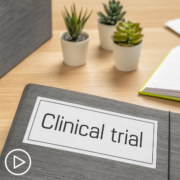
How Can MPN Experts Help Inform Patients About Clinical Trials? |

|
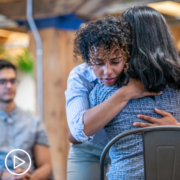
|
Transcript:
Natasha Johnson:
There is a risk for progression for patients with MPN. When we look at this, we know that myeloproliferative neoplasms is really an umbrella term for three different diseases that run along a continuum. And they all are unique in that they have an overactive JAK-STAT pathway. And in that, they have very similar disease characteristics and driver mutations. So with that, progression is possible. It doesn’t mean that it’ll happen. It doesn’t matter what the percentage is. We don’t know that, we can’t say it definitely happens, but it’s something that we watch for. We educate you on those signs and symptoms of progression. So this could be caught early and be activated on early. So what are signs of progression? Progression can be thought as if you start to see changes in blood cell counts.
So this could mean a decrease in hemoglobin or platelets, or a rise or decrease in white blood cell counts. Now it’s very important to remember that sometimes changes in blood cell counts is really a side effect to medication, and that needs to be thought of before you think about disease progression. But it’s changes in these counts that don’t improve despite modifying the dose of medication. Another sign of disease progression is an increase or worsening in symptoms.
And here is where it’s important to know what the symptoms are and try to think about or keep a record in where you were and then where you are at today. When we think progression may be happening, it is important that your provider order a bone marrow biopsy, because that helps to reestablish current disease status, and it helps to guide treatment. Maybe it opens doors for more treatments.
My activation tip here would be, number one, monitor your blood cell counts, be your own advocate. Think about if they’re changing, could it be medication, or is it disease progression? Monitor your symptoms. Look at the total symptoms score or write down your symptoms and try to record where you’re at in intervals. Are things getting worse? If they are, don’t wait three months for your next appointment. Contact your healthcare provider and ask to be seen. Ask about getting a repeat bone marrow biopsy to establish where the current disease status is because that can open up doors possibly to more treatments.
Share Your Feedback
Create your own user feedback survey
How Can MPN Experts Help Inform Patients About Clinical Trials?
How Can MPN Experts Help Inform Patients About Clinical Trials? from Patient Empowerment Network on Vimeo.
What are optimal ways for myeloproliferative neoplasm (MPN) experts to inform patients about clinical trials? Expert Natasha Johnson shares how she prepares herself, her approach to informing patients, and how she reacts if she senses patient hesitancy.
[ACT]IVATION TIP
“…go on clinicaltrials.gov, search up MPN trials, and that will first clue you into could you be eligible and where are they being done. And then you can contact that center or ask about it where you’re being seen locally and just get information. You’re not committing to it completely. Minds can be changed at any time.”
Related Resources:

How Can MPN Providers and Patients Guard Against Disease Progression? |

|

|
Transcript:
Natasha Johnson:
As a provider of MPN patients, I first make sure that I am educated on what clinical trials are available and out there. And then when I see patients, I offer these options. I’m a strong, strong advocate for clinical trials because if it wasn’t for them, we wouldn’t have the medications that we have today. And just in the last several years, we’ve had many medications approved for MPNs that we didn’t have 15 years ago, and all that was done by clinical trials. I have on firsthand seen benefits of clinical trials.
So I strongly encourage patients to be a part of that. If there’s hesitancy from the patient or caregiver, I would take time to dig into that and help to answer or alleviate fears that come along with that. It’s important that the clinical trial coordinator who knows specific protocols of trials very, very well, they can come in the room or spend time on the phone with the patient to answer any questions, to alleviate fears and allow that opportunity if a patient is open and willing to do it.
So my activation tip would be first of all, go on clinicaltrials.gov, search up MPN trials, and that will first clue you into could you be eligible and where are they being done? And then you can contact that center or ask about it where you’re being seen locally and just get information. You’re not committing to it completely. Minds can be changed at any time. The clinical trials are greatly, greatly, greatly beneficial and as I said, we have what we have today because of patients who participated in clinical trials 10, 20 years ago and then have given these great opportunities to patients now.
Share Your Feedback
Create your own user feedback survey
How Can MPN Patient Advocacy Groups Help Patients?
How Can MPN Patient Advocacy Groups Help Patients? from Patient Empowerment Network on Vimeo.
What are some ways myeloproliferative neoplasm (MPN) patient advocacy groups can help support patients? Expert Natasha Johnson explains different ways that advocacy groups can help MPN patients in their care, her experience with advocacy groups, and other health professionals who can aid in patient support.
[ACT]IVATION TIP
“…look out for and research MPN support groups. You can do this under the MPN Foundation, or there are other resources to find a way to attend those. You may get so much information that you were unaware of. And then also keeping in good communication with your nursing team, your healthcare team, and if any problems come up, or great barriers such as financial assistance for medication, reaching back out to the pharmacy or the pharmacist where that was sent through to ask for assistance and help.”
Related Resources:

How Can Myeloproliferative Neoplasm Care Barriers Be Overcome? |

|

How Can MPN Experts Help Inform Patients About Clinical Trials? |
Transcript:
Natasha Johnson:
There are several unsung heroes that work with the MPN population and are just not known, but offer great, great resources and can be utilized. First, I’ll start off saying with, there are foundations, for example, the MPN Foundation where it’s a large patient advocacy group that comes along and they establish support groups all over the United States, and they invite patients and caregivers to come and join, whether in-person or through Zoom. And through those meetings, sometimes experts are brought in and taught. Sometimes the nurses are brought in and taught and just provide resources, education to patients, and also just to help answer questions. Through attending those meetings, maybe you can also get in to see an MPN expert. So I would strongly encourage the use of these foundations and these support groups because these are people, that they’re not in the clinic setting day-to-day.
They may be a patient themself who has had MPN for a long time, but now they’re overseeing and heading up the support group. Sometimes it’s a family member of a patient who’s now overseeing and heading up the support group. Additionally, there are pharmacists who are well-versed in MPNs and the medications and can guide and direct exactly where to go to get help when it comes to financial assistance for treatment. And then, of course, nurses. Nurses are just such a key player here that they take the time to listen and to educate and to answer questions or direct.
And so my activation tip would be to one, look out for and research MPN support groups. You can do this under the MPN Foundation, or there are other resources to find a way to attend those. You may get so much information that you were unaware of. And then also keeping in good communication with your nursing team, your healthcare team, and if any problems come up, or great barriers such as financial assistance for medication, reaching back out to the pharmacy or the pharmacist where that was sent through to ask for assistance and help.
Share Your Feedback
Create your own user feedback survey
How Can Underrepresented MPN Communities Access Support?
How Can Underrepresented MPN Communities Access Support? from Patient Empowerment Network on Vimeo.
What are some ways for underrepresented myeloproliferative neoplasm (MPN) communities to access support? Expert Natasha Johnson shares ways that she’s helped inform patients about resources and clinical trial information to help bridge gaps in care.
[ACT]IVATION TIP
“…try to get into a large cancer center or academic center and see an MPN expert. Many times, this is just by self-referral. Charity is sometimes provided through these. Zoom visits can be done as consults or follow-up visits. So my encouragement would be search these out, find out who the experts are, and contact them directly and see if there is any possibility or a way that you can get in to see an MPN expert for a consult so you can get the best care possible.”
Related Resources:

How Can Myeloproliferative Neoplasm Care Barriers Be Overcome? |

|

|
Transcript:
Natasha Johnson:
From a nursing perspective, there are several gaps that affect our underrepresented communities. And unfortunately, these are patients who are very late diagnosed, maybe incorrectly diagnosed, and even underdiagnosed because there is difficulty with access to care and then getting treatment. And here’s where it’s important that as providers, as nurses, we’re educating the community. We’re educating the public health department on these diseases to help pick up for that. We’re making people and patients aware of these diseases to help pick up on that. And there are many resources that are available online for free.
There are also local support groups for patients with MPNs and their caregivers that you can join in-person or on Zoom that provide just education resources on new trials that are out there or new treatments that are out there. Patients themselves can research clinical trials by looking at clinicaltrials.gov and see what’s out there and contact the academic center that’s performing those trials. There’s free information online that provides recorded sessions from conferences or speakers or speaking done by the MPN experts that you can just look to and get to easily to help understand the disease, knowing the symptoms, and then guiding treatment.
If you belong to an underrepresented community, my activation tip would be to try to get into a large cancer center or academic center and see an MPN expert. Many times, this is just by self-referral. Charity is sometimes provided through these. Zoom visits can be done as consults or follow-up visits. So my encouragement would be search these out, find out who the experts are, and contact them directly and see if there is any possibility or a way that you can get in to see an MPN expert for a consult so you can get the best care possible.
Share Your Feedback
Create your own user feedback survey
Myeloproliferative Neoplasm Financial and Care Resources
Myeloproliferative Neoplasm Financial and Care Resources from Patient Empowerment Network on Vimeo.
Some myeloproliferative neoplasm (MPN) patients may run into care barriers, so what can be done to help them? Expert Natasha Johnson from Moffitt Cancer Center shares her perspective on how she assists MPN patients with resources and how healthcare providers can help in overcoming care barriers.
[ACT]IVATION TIP
“…Let the healthcare team know, especially the great players here that are helpful are the nurses involved in the care team and the pharmacist who know of these outside resources to provide financial assistance so patients can get medication.”
Related Resources:

How Can Myeloproliferative Neoplasm Care Barriers Be Overcome? |

How Can MPN Providers and Patients Guard Against Disease Progression? |

|
Transcript:
Natasha Johnson:
When I’m speaking to MPN patients or caregivers about barriers, I really try to provide resources. All it takes is a Google search to look up the MPN Foundation or many other organizations that provide education. They provide direction to reach MPN experts. There are ways to get ahold of them and see them. Visits can be done through Zoom. Some large cancer centers even do charity care, so patients can get in who do not have insurance, but I would provide those resources whether I’m seeing that patient or I’m in the community teaching or at a supportive care group. I think it’s very, very important that patients need to know that they can access care, and it’s by researching, doing some research and being active in that care.
Secondly, when I’m speaking to patients about issues with medication costs, which can be a great barrier, my activation tip to them again, would be to let the healthcare team know, especially the great players here that are helpful are the nurses involved in the care team and the pharmacist who know of these outside resources to provide financial assistance so patients can get medication.
It’s very important, don’t let it be a barrier or stop anything or stop treatment, but pursue that by making us aware and then we can help you.
Share Your Feedback
Create your own user feedback survey
How Can Myeloproliferative Neoplasm Care Barriers Be Overcome?
How Can Myeloproliferative Neoplasm Care Barriers Be Overcome? from Patient Empowerment Network on Vimeo.
How can myeloproliferative neoplasm (MPN) providers and advocates help patients overcome care barriers? Expert Natasha Johnson from Moffitt Cancer Center shares financial resources and additional ways MPN expert care can be accessed.
[ACT]IVATION TIP
“…let the care team know there are financial resources available, whether that’s through foundations or the manufacturer itself, the care team, including the nurses and the pharmacists, can help direct and guide to get patients the medications that they need to treat their disease.”
Related Resources:

How Can MPN Providers and Patients Guard Against Disease Progression? |

|

How Can MPN Experts Help Inform Patients About Clinical Trials? |
Transcript:
Natasha Johnson:
There are several barriers to accessing care for patients with MPNs. Specifically, the first one I would say is accessing an MPN expert. You know when people live out in the communities or there’s difficulty with transportation, or they don’t have insurance they may be seen by public healthcare or locally or not at all. And there are really minimal reasons that a patient should not be able to see an MPN expert. Nowadays that we have Zoom visits, consults can be done through Zoom, even follow-up appointments can be done through Zoom. Labs can be taken locally. We can review labs if they’ve been done by the health department or primary care physician.
But I strongly, strongly, strongly encourage all patients who are suspected to have an MPN or newly diagnosed with an MPN. Try to get in with an MPN expert. Secondly, a great barrier to MPN care is the cost of medication. We know medications are very, very expensive, and even patients that have great insurances still cannot afford these medications.
So my activation tip for that would be to let the care team know there are financial resources available, whether that’s through foundations or the manufacturer itself, the care team, including the nurses and the pharmacists, can help direct and guide to get patients the medications that they need to treat their disease.
Share Your Feedback
Create your own user feedback survey
